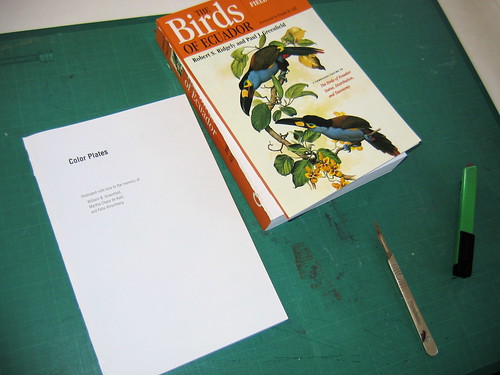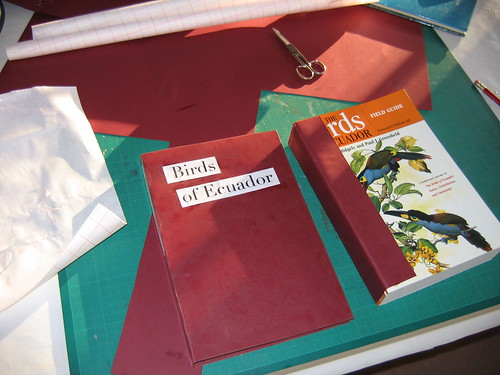Having said that I recommend the Galapagos, I have to say that equatorial lowland rainforest may not be for everyone. With the temperature in the 30s and 80% humidity, it’s hard work just walking around. Particularly, once you do get hot, it takes for ever to cool down again because your basic thermal regulation system – sweat – just doesn’t help. The rainforest is also quite superficially boring to walk through: endless dark green foliage everywhere, rather gloomy light, and very little sign of animal life except for birdcalls and the noise of cicadas. There’s a lot of mud underfoot. When it rains, it really rains. And I am smothered in mosquito bites.
But once you get used to it, there are things to see: the most obvious being the butterflies of all colours and sizes, topped out by the morphos – huge flashing sky-blue things that flop lazily through the air. I saw a tarantula, and helicopter damselflies, and mating stick-insects. There are loads of ant, termite and wasp nests in the trees, leafcutter and army ants at your feet. If you’re sharp-eyed (or have a sharp-eyed guide), there are frogs, toads and lizards around the place. I was really pleased to see a little tiny poison arrow frog. And there was one lizard which was so well camouflaged that, even knowing where it was and being able to see its head, legs and tail, my brain still insisted it was a dead leaf. I think I saw only two mammal species, a squirrel and a monkey, but they were cool. For that matter, the foliage itself is interesting: each tree is only like a starting point in establishing the plantlife, with bromeliads, epiphytes and lianas all over the place among other green creeping things I didn’t recognise.
And of course there are lots of birds. Which isn’t to say that it’s easy birding. Most of them are neck-breakingly high in the trees and the dense foliage doesn’t make it any easier. The ones that don’t live in the canopy are generally very secretive and usually have to be located by their calls. Fortunately there was an exceptionally good local bird guide called Jose whose English was limited but included phrases like ‘Rufescent Tiger Heron’, ‘Chestnut-winged Foliage-gleaner’ and ‘in the palm leaves’. With the help of a lot of taped bird calls and a laser pointer, he managed to show those of us in the birding group about 60 species a day.
There was also a canopy tower – a 40 metre high tower to scan the canopy from. I don’t know if I’ve mentioned my fear of heights before, but you’ll appreciate that I found the tower a bit challenging. The first time I tried I only got about halfway up before having to go back down. I did manage to get all the way up the next time, by staring at the back of the person in front and trying not to think, and while I can’t say I was ever completely relaxed up there, it really is a great way of birding the rainforest; in three hours we saw four species of toucan, loads of tanagers, a trogon, parrots, several raptors etc, all at eye-level for once. And a load of sweat-drinking bees, which are irritating but harmless.
Next stop the cloudforest, which will have just as much wildlife but will hopefully be a bit more comfortable for those of us who could afford to lose a few pounds.

